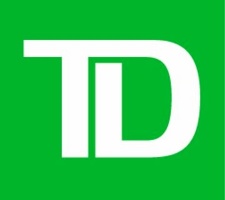@TDAM_Canada
Investor Knowledge + 5 Minutes = Current Insights
Artificial Intelligence (AI) is a highly disruptive technology with compute requirements that are likely to continue growing exponentially well into the 2030s. Alongside the rising share of electric vehicles on roads and the trend toward the onshoring of manufacturing, AI is beginning to create an electricity demand surge in the U.S. This surge has critical implications for infrastructure investment, especially as the AI-induced boom follows an extended period of flat U.S. electricity consumption.
This electricity demand boom will likely stress existing infrastructure, including generation capacity, transformers and the transmission and distribution (T&D) grid. Without massive investment, as well as transformational innovations, there is a rising risk that electricity demand may race ahead of supply.
With this in mind, TD Asset Management Inc. (TDAM) recently published an article titled AI and Electricity Demand: Will the Power-Hungry Machines be Satiated? The article discusses the rising risk of electrical demand outstripping supply and answers five important questions about the impending electricity demand boom:
- Why is electricity load growth increasing now, after having been flat from 2007-2022?
- Will power supply constraints impede AI progress?
- Is AI unwelcome news for CO2 emissions and climate change?
- What is the key risk of this boom?
- What are the implications for investors?
While the article is packed with interesting and educational insights, of particular interest is the section that discusses if electricity constraints will impede AI progress:
The possibility of insufficient electricity capacity offers a concrete example of where the fast-moving world of bits runs up against the slow-moving world of atoms. Think of the time it takes to add generation capacity, affix transformers, or build out the T&D grid. Moreover, utilities are by design slow-moving, regulated entities.
Reflecting this, many are worried about a looming power crunch. According to a survey by Barclays ("Grid of the future event: Highlight & survey results. February 20, 2024), 75% of respondents believe rising grid investment is a long-term secular trend. However, only a minority of those surveyed believe grid equipment and T&D capacity can keep pace.
Considerations for portfolio construction
With AI compute requirements likely to continue to grow exponentially, knowing the investment implications is imperative when thinking about portfolio construction. They key Implications of increased electricity demand is around utilities, companies exposed to electricity infrastructure, commodities, and infrastructure investments.
The upgrading of the power grid, as well as green transition, is beneficial for copper and aluminum. Another beneficiary is natural gas, which will likely continue to play a key role in electricity generation for at least the next decade. Also, the infrastructure asset class should benefit from significant investment in power. It appears attractive because it has a relatively low correlation to equities, provides a hedge against inflation, and offers long-term, stable, risk-adjusted returns.
TDAM offers a number of high-quality solutions that can provide exposure to the growth expected in electricity demand over the coming decade and beyond. This includes investments in companies within utilities, electricity infrastructure, commodities, and Infrastructure.
Be sure to check out the full article for all the great insights.
The information contained herein has been provided by TD Asset Management Inc. and is for information purposes only. The information has been drawn from sources believed to be reliable. The information does not provide financial, legal, tax or investment advice. Particular investment, tax, or trading strategies should be evaluated relative to each individual’s objectives and risk tolerance.
Certain statements in this document may contain forward-looking statements (“FLS”) that are predictive in nature and may include words such as “expects”, “anticipates”, “intends”, “believes”, “estimates” and similar forward-looking expressions or negative versions thereof. FLS are based on current expectations and projections about future general economic, political and relevant market factors, such as interest and foreign exchange rates, equity and capital markets, the general business environment, assuming no changes to tax or other laws or government regulation or catastrophic events. Expectations and projections about future events are inherently subject to risks and uncertainties, which may be unforeseeable. Such expectations and projections may be incorrect in the future. FLS are not guarantees of future performance. Actual events could differ materially from those expressed or implied in any FLS. A number of important factors including those factors set out above can contribute to these digressions. You should avoid placing any reliance on FLS.
TD Asset Management Inc. is a wholly-owned subsidiary of The Toronto-Dominion Bank.
®The TD logo and other TD trademarks are the property of The Toronto-Dominion Bank or its subsidiaries.
 Canada
Canada

